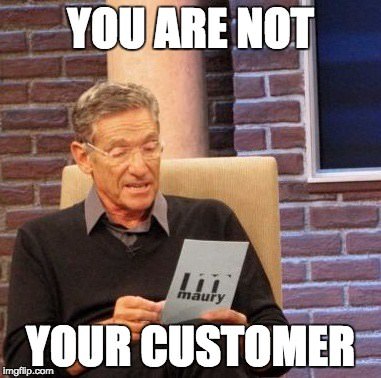We’ve been making b2b Animated videos for a while.
Longer than almost all of our competitors, and we’ve outlasted quite a few of them. I say that with some pride, and it makes the lows (we had highs and we had lows) more palatable.
So we’ve made – and survived – just about every mistake that you can make while making videos. Don’t get me wrong, we’ve had great success, but consider this:
- Michael Jordan missed over 9,000 shots.
- Babe Ruth struck out almost twice as often (1330 times) as he hit a home run (714 times).
So anyone who has been around makes mistakes.
Want to know the biggest mistakes people make with their b2b animations? It’s not in video style, it’s not in scripting.
It comes a lot earlier in the process than you think.
Failure – and loss – come when businesses treat their video like an art project.
Let’s face it, it’s fun to make a video. It’s neat to start with an idea and watch it come to life. The process of creating a story from whole cloth is energizing, uplifting, and it’s creative. And that’s where the big temptation lies.
When we’re making b2b videos, we’re here to do a job, win business, or inform customers. When we lose focus we get tempted to make an art project.
The Problem With Art Projects
Art is inherently subjective. What one person loves someone else might hate.
And neither are wrong.
Nickelback is the most “hated” band in America, yet they have sold 50 million albums. That’s the same number as Tony Bennett.
We hear the stories of brilliant artists that never lived to see the success of their work.

When you make a video into an art project, then you’re setting yourself up to fail. Because what could work really well for you may be a bad idea for your customers.
One of the hardest things to remember in b2b video work is that you are not your customer.

This means that you are not your market, you do not have the same problems. You may have some overlap. But you’re different. This means that when you try to make art, you’re risking a lot.
So instead of making something that makes your department happy, build something that solves a problem.
This improves your odds of success a great deal.
We’ve made 400+ videos. And we try to make each one useful, big, entertaining and fun. But this is all subjective. Where we are really locked in is when we have a brief and a target and we are asked to hit a goal.
How you Should Think Of Your B2B Animated Video
You should think of your business video as an employee. You’re hiring it to do a job, to occupy a space.
You can hire it to do a variety of things:
- Inform your clients what you’re doing.
- Teach them how to use your software.
- Persuade them to work with you.
- Persuade them of an important idea.
This, then, is less subjective. These ideas are able to be executed measurably.
An Art Project Vs. An Employee
The “employee” metaphor helps dissipate the pressure.
You’re hiring a video to do a job.
There are several “types” of videos: Marketing Videos, Onboarding Videos, Support Videos, Explainer Videos, Persuader Videos, Sales Videos.
We have to get clear on what we expect to happen – what the job of the video is – before we begin the work. We want to be as specific as possible.
Here are some examples of bad b2b video goals:
- Video #1: Make a hip, edgy video.
- Video #2: Brand us as the industry leader.
- Video #3: Look “big league” like our competition.
Here are some examples of good goals for b2b videos:
- Video 1: Job Description: Teach our customers EXACTLY what to do when they get our product. This will reduce support requests by 5%.
- Video #2: Job Description: Increase the number of opt-ins from 4% to 7%.
- Video #3: Job Description: Get walk-by traffic at our next trade show to stop and talk to us and to entertain our guests while we’re waiting.
- Video #4: Job Description: Create an asset that accurately states what our process is so our customers can comprehend.
Remember: Sometimes good goals may be able to achieve other things. A highly focused conversion video may be able to brand you, make you feel hip and edgy. The difference is we’re starting with a business goal first.
These are good examples of what to do vs. what not to do.
How To Finish This
When you are making a video into an art project, you’re competing with world class entertainment. When you’re making a video an employee, you’re doing a job that helps your customers. You’re serving, and you’re not getting caught in delusions of grandeur.
We make videos that do their jobs.
And yes, we make them beautiful, fun, entertaining and compelling. We try to make sure that they have good taste.
But when you hire an employee, you know if it’s doing its job or not. When you make an art project, it’s a much more daunting task to learn if you have been successful.
Your turn.
Do you want me to take a look at your brief? Why not reach out on my contact page.
